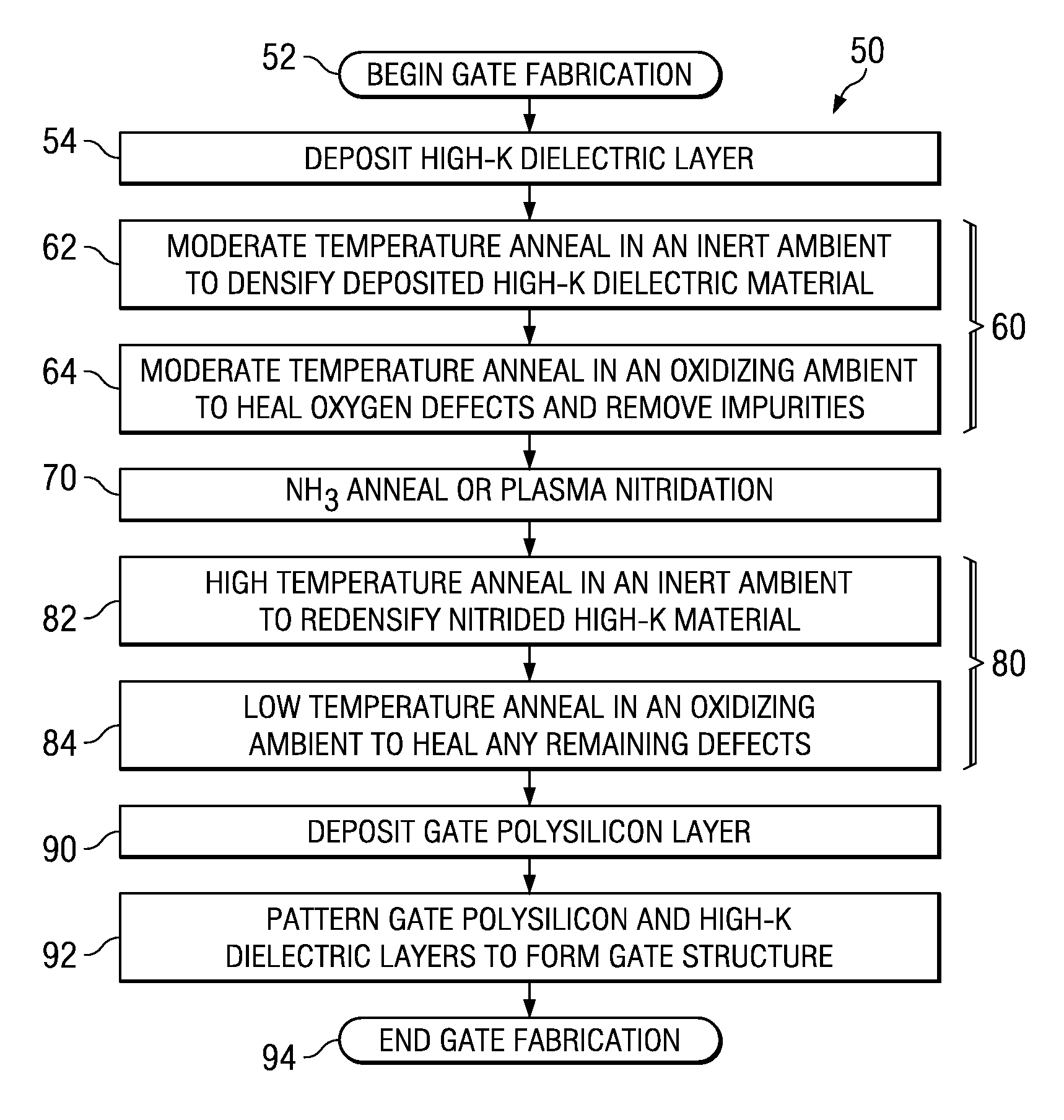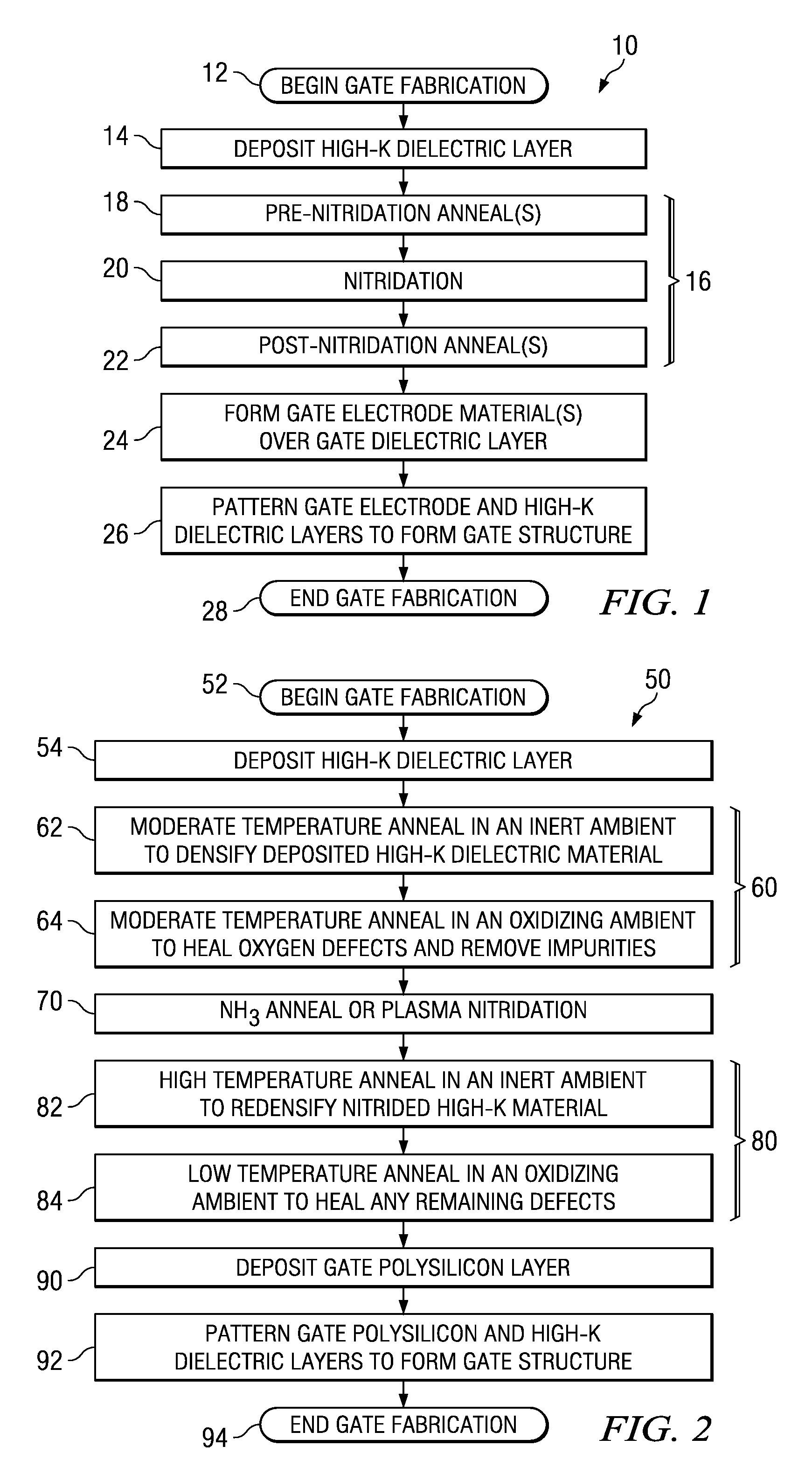Method for fabricating transistor gate structures and gate dielectrics thereof
a transistor and gate dielectric technology, applied in the field of semiconductor devices, can solve the problems of limited limited ability to form thin oxide films with uniform thickness, and electrical and physical limitations of the extent to which the thickness of siosub>2 /sub>gate dielectrics can be reduced, so as to improve the thermal stability of the deposited material
- Summary
- Abstract
- Description
- Claims
- Application Information
AI Technical Summary
Benefits of technology
Problems solved by technology
Method used
Image
Examples
Embodiment Construction
[0018]One or more implementations of the present invention will now be described with reference to the attached drawings, wherein like reference numerals are used to refer to like elements throughout, and wherein the devices and structures illustrated in the figures are not necessarily drawn to scale.
[0019]The invention relates to post-deposition treatment of deposited high-k gate dielectric films to densify the material, heal defects, and to thermally stabilize the material through multiple anneal processes and a nitridation process. The methods of the invention can be employed following high-k deposition and before formation of gate electrode materials over the high-k, to improve the high-k material quality (e.g., reduce point and other defects, densify the material, remove impurities, etc.). The techniques of the invention may be employed in conjunction with any high-k dielectric materials having a dielectric constant “k” greater than that of SiO2 (e.g., greater than about 3.9), ...
PUM
| Property | Measurement | Unit |
|---|---|---|
| pressure | aaaaa | aaaaa |
| dielectric constant | aaaaa | aaaaa |
| temperature | aaaaa | aaaaa |
Abstract
Description
Claims
Application Information
 Login to View More
Login to View More - R&D
- Intellectual Property
- Life Sciences
- Materials
- Tech Scout
- Unparalleled Data Quality
- Higher Quality Content
- 60% Fewer Hallucinations
Browse by: Latest US Patents, China's latest patents, Technical Efficacy Thesaurus, Application Domain, Technology Topic, Popular Technical Reports.
© 2025 PatSnap. All rights reserved.Legal|Privacy policy|Modern Slavery Act Transparency Statement|Sitemap|About US| Contact US: help@patsnap.com



